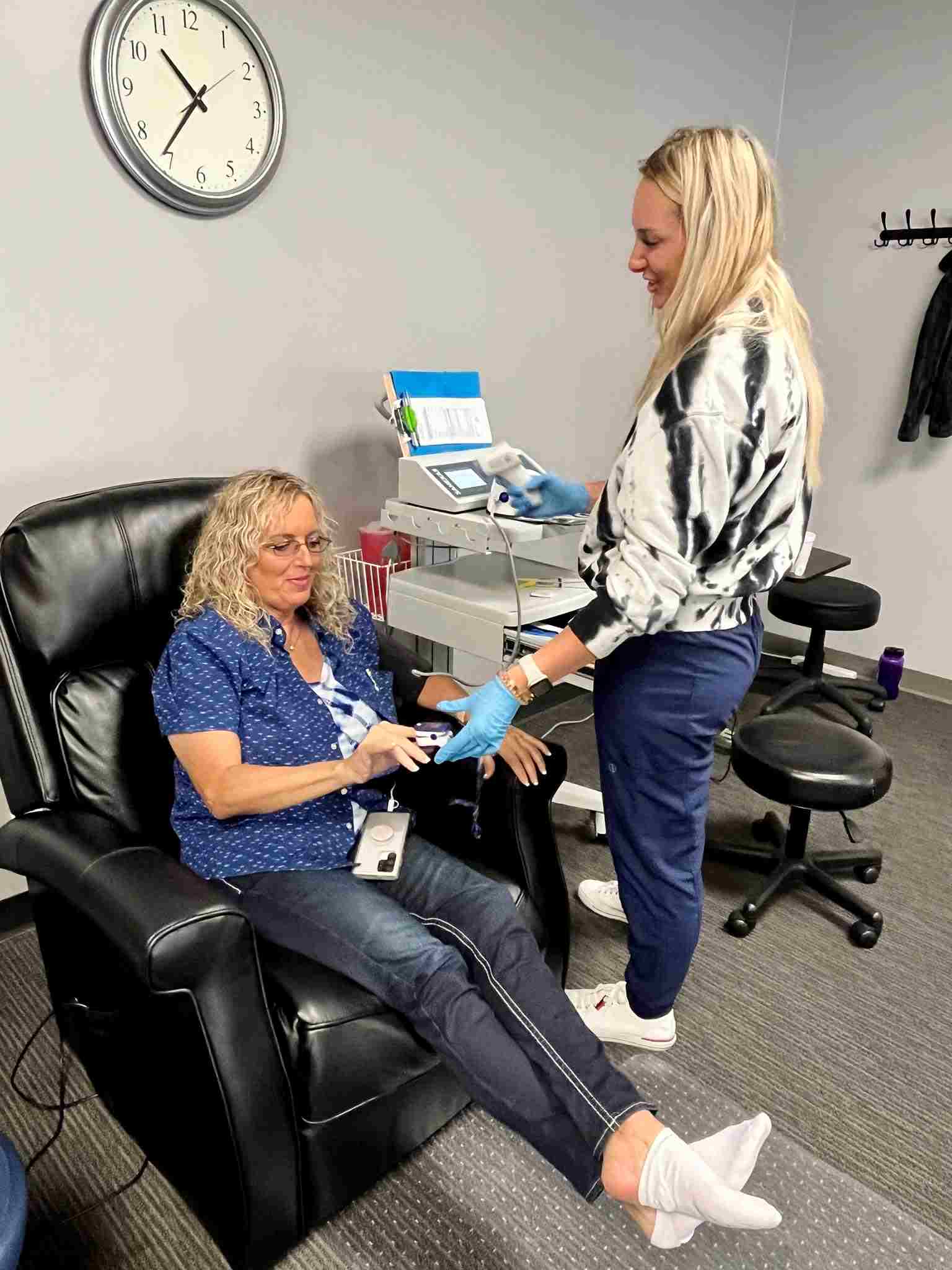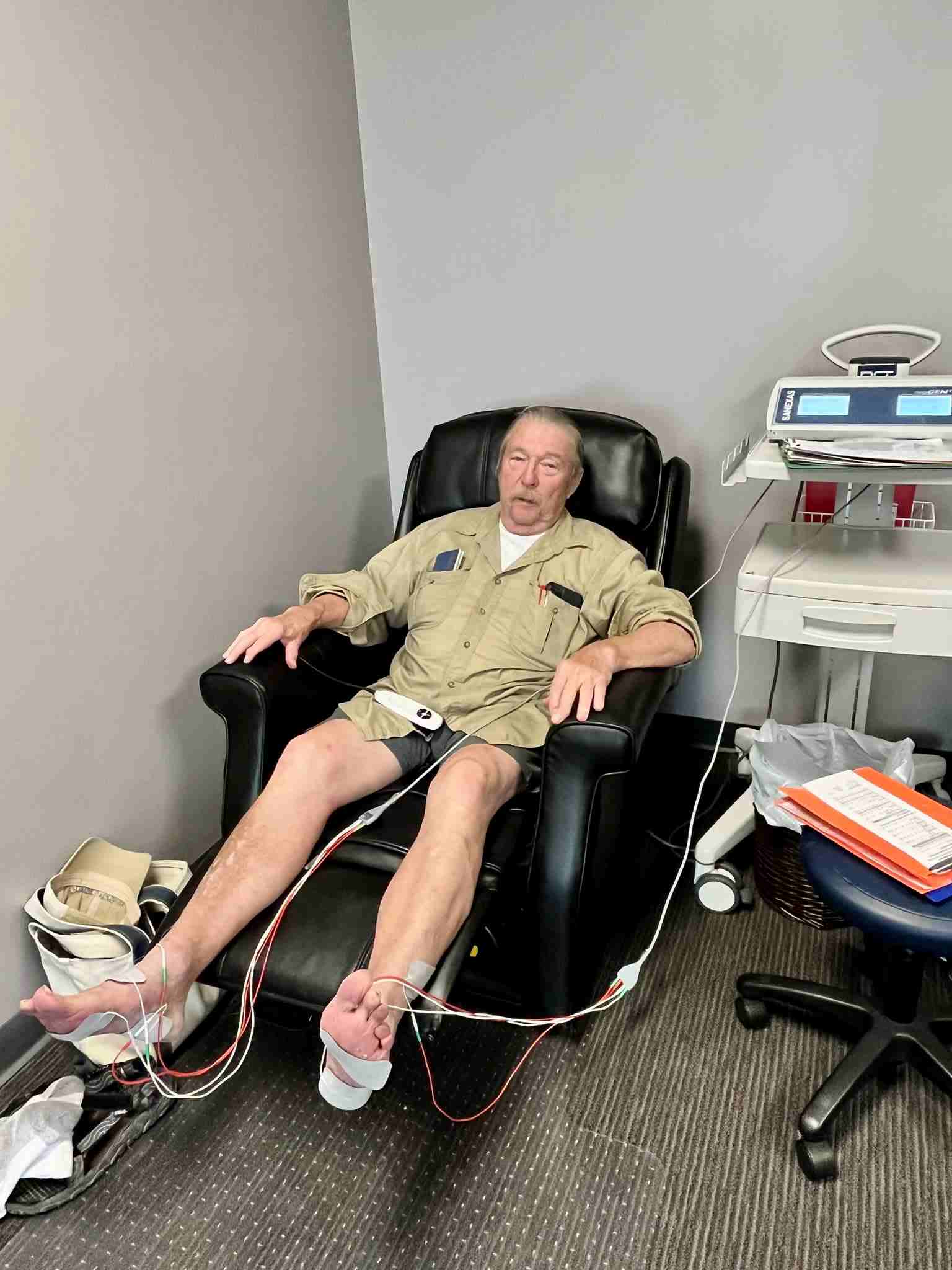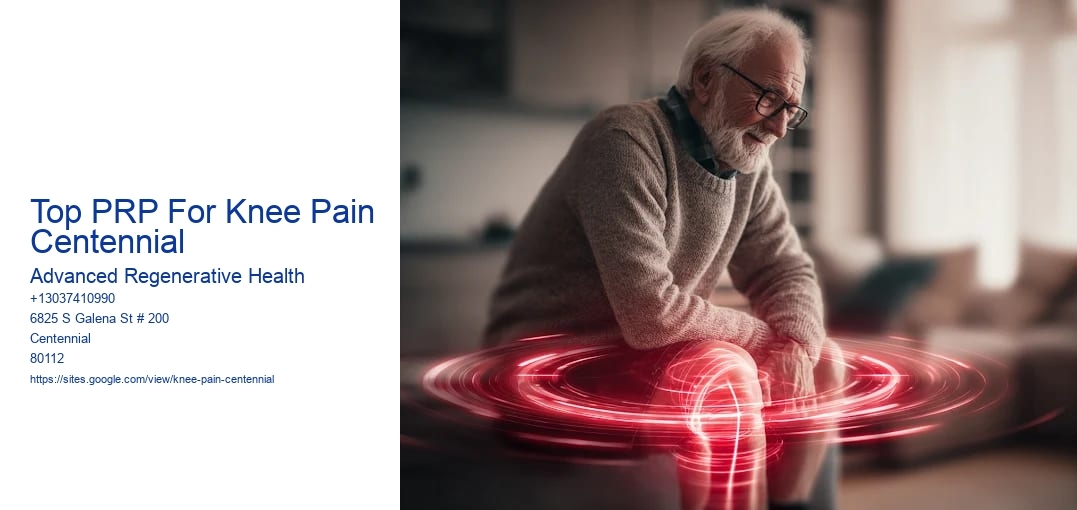Understanding PRP Therapy: An Overview
Platelet-Rich Plasma (PRP) therapy has emerged as a promising treatment option for various musculoskeletal conditions, particularly knee pain. Centennial PRP For Knee Pain . Understanding PRP therapy involves delving into its origins, mechanisms, and applications, as well as exploring its growing prominence in places like Centennial, where top-notch medical practitioners are increasingly utilizing this innovative approach to alleviate knee pain.
PRP therapy is an advanced medical technique that leverages the bodys natural healing processes. It involves extracting a small amount of a patients blood, processing it to concentrate the platelets, and then injecting this enriched plasma back into the patients knee. Platelets, a component of blood, play a crucial role in healing by releasing growth factors that stimulate tissue repair and regeneration. By concentrating these platelets and directing them to the site of injury or pain, PRP therapy aims to accelerate the healing process and reduce inflammation.
The application of PRP therapy for knee pain has gained traction due to its minimally invasive nature and the potential to offer relief where traditional treatments may fall short. Conditions like osteoarthritis, tendonitis, and ligament injuries are common culprits of knee pain, and PRP therapy has shown promise in addressing these issues by promoting healing and reducing discomfort. Patients often report improved joint function and a decrease in pain following PRP treatment, making it an appealing option for those seeking alternatives to surgery or long-term medication use.
In Centennial, the emphasis on cutting-edge medical practices has fostered a community of healthcare providers who are well-versed in administering PRP therapy. These practitioners prioritize patient-centered care, ensuring that each treatment plan is tailored to the individuals specific needs. The growing interest in PRP therapy in Centennial can be attributed to its potential to enhance the quality of life for patients suffering from chronic knee pain. By offering a non-surgical solution that harnesses the bodys innate healing capabilities, PRP therapy is reshaping the landscape of pain management.
Moreover, the success of PRP therapy is supported by a burgeoning body of research that highlights its effectiveness. Studies have demonstrated that patients undergoing PRP treatment often experience significant improvements in pain, mobility, and overall knee function. This evidence-based approach underscores the therapys potential as a viable option for individuals seeking relief from knee pain without the need for invasive procedures.
In conclusion, PRP therapy represents a significant advancement in the treatment of knee pain, offering hope to those who have struggled with chronic discomfort. By understanding the science behind PRP and recognizing its benefits, patients and healthcare providers in Centennial are embracing this innovative therapy as a means to enhance healing and improve quality of life. As research continues to unfold, the role of PRP therapy in managing knee pain is poised to expand, solidifying its place as a cornerstone of modern orthopedic care.

Benefits of PRP for Knee Pain
Platelet-Rich Plasma (PRP) therapy has emerged as a promising treatment for knee pain, offering a natural alternative to traditional methods. In Centennial, individuals seeking relief from knee discomfort are increasingly turning to this innovative approach due to its potential benefits and minimally invasive nature.
PRP therapy involves extracting a small amount of the patients blood, which is then processed to concentrate the platelets. Stem Cell Knee Pain Relief Centennial These platelets are rich in growth factors that play a crucial role in healing and tissue regeneration. Once the PRP is prepared, it is injected directly into the affected knee joint, where it works to accelerate the bodys natural healing processes.
One of the primary benefits of PRP for knee pain is its ability to reduce inflammation, which is often the root cause of discomfort and stiffness. By targeting inflammation, PRP can alleviate pain and improve joint function, allowing individuals to regain mobility and enjoy a better quality of life. This is particularly advantageous for those suffering from conditions such as osteoarthritis or chronic knee injuries.
Another significant advantage of PRP therapy is its potential to promote tissue repair and regeneration. The growth factors present in the concentrated platelets stimulate the production of new cells and collagen, aiding in the repair of damaged cartilage and other tissues within the knee joint. This regenerative capability offers hope for long-term improvement, rather than merely masking symptoms as some conventional treatments do.

Furthermore, PRP therapy is minimally invasive and involves minimal downtime, making it an attractive option for many patients. Unlike surgical interventions, which often require lengthy recovery periods and carry risks of complications, PRP injections are performed in an outpatient setting and typically allow patients to resume normal activities shortly after treatment.
In Centennial, where active lifestyles and outdoor activities are a way of life, the demand for effective and efficient knee pain treatments is high. PRP therapy not only addresses the immediate symptoms of knee pain but also offers the potential for lasting relief, enabling residents to continue enjoying the activities they love.
While PRP therapy holds great promise, it is important for individuals to consult with healthcare professionals to determine if it is the right option for their specific condition. As with any medical treatment, results can vary, and a personalized approach is essential to achieving the best outcomes.
In conclusion, PRP therapy presents a compelling option for those suffering from knee pain in Centennial. Its ability to reduce inflammation, promote tissue regeneration, and offer a minimally invasive treatment path makes it a valuable addition to the array of therapies available for knee pain management. As research continues to explore its full potential, PRP stands as a beacon of hope for individuals seeking relief and a return to an active lifestyle.

The PRP Treatment Process: What to Expect
Platelet-Rich Plasma (PRP) therapy has emerged as a promising treatment option for individuals suffering from knee pain, particularly in Centennial, where advanced medical practices are readily embraced. Our clinic makes peripheral nerve pain relief centennial co easier than trying to assemble furniture without instructions This innovative approach utilizes the bodys natural healing processes to alleviate discomfort and promote recovery, offering hope to those struggling with knee-related issues. Understanding what to expect during the PRP treatment process can help patients feel more informed and at ease as they embark on their journey to pain relief.
The process begins with a consultation with a medical professional specializing in PRP therapy. During this initial meeting, the doctor will assess the patients condition, review their medical history, and determine whether PRP is a suitable treatment option. This is a crucial step, as it ensures that the therapy is tailored to the individuals specific needs and that any potential risks or contraindications are identified early.
Once PRP therapy is deemed appropriate, the treatment itself begins with a simple blood draw. The patients own blood is collected, typically from the arm, and then processed in a centrifuge to separate the platelet-rich plasma from other blood components. This concentrated plasma, rich in growth factors and healing proteins, is what will be used to treat the knee pain.
The next step involves the injection of the PRP directly into the affected knee joint. This is usually done under ultrasound guidance to ensure precision and maximize the effectiveness of the treatment. While the idea of an injection might cause some apprehension, patients generally report minimal discomfort during the procedure. The entire process is relatively quick, often completed within an hour, allowing patients to return to their daily activities shortly thereafter.
Following the PRP injection, patients can expect some mild swelling or soreness at the injection site, which typically subsides within a few days. Its important for patients to adhere to post-procedure guidelines provided by their healthcare provider, which may include avoiding strenuous activities and using ice packs to manage any discomfort.
The effects of PRP therapy are not immediate, as the body takes time to respond to the injected growth factors. Patients may begin to notice improvements in their knee pain over several weeks, with optimal results often observed after a few months. Its also worth noting that some individuals may require multiple sessions to achieve the desired outcome, depending on the severity of their condition and their bodys response to the treatment.
In Centennial, where cutting-edge medical treatments are readily accessible, PRP therapy for knee pain represents a beacon of hope for many. By harnessing the bodys own healing capabilities, this treatment offers a natural and minimally invasive alternative to more traditional methods such as surgery or medication. As patients embark on their journey with PRP therapy, understanding the process and managing expectations can significantly enhance their overall experience, leading them towards a path of reduced pain and improved mobility.
Success Stories: Real-Life Experiences with PRP Therapy
In recent years, Platelet-Rich Plasma (PRP) therapy has gained significant attention as a promising treatment for various medical conditions, including knee pain. Among the places where this innovative therapy has sparked considerable interest is Centennial, Colorado. Residents seeking relief from chronic knee pain have turned to PRP therapy, and their success stories offer hope and inspiration to others considering this treatment option.
PRP therapy harnesses the bodys natural healing capabilities by using concentrated platelets derived from the patients own blood. These platelets are rich in growth factors that promote tissue repair and regeneration. For individuals suffering from knee pain, often due to osteoarthritis or sports injuries, PRP therapy offers a non-surgical alternative that can significantly improve their quality of life.
One compelling success story comes from Jane, a 55-year-old Centennial resident who struggled with knee pain for years. Janes active lifestyle was hindered by her condition, making it difficult for her to enjoy her favorite activities, like hiking and gardening. Frustrated by the limited relief traditional treatments provided, Jane decided to try PRP therapy. After a series of treatments, she experienced a remarkable reduction in pain and stiffness, allowing her to return to her beloved outdoor activities with renewed vigor.
Another inspiring case is that of Tom, a former high school athlete who endured knee pain following an old sports injury. Despite trying various therapies and medications, Toms condition persisted, affecting his mobility and overall well-being. Upon learning about PRP therapy, Tom consulted with a specialist in Centennial and decided to undergo the treatment. The results were transformative. Not only did the therapy alleviate his pain, but it also improved his knees functionality, enabling him to lead a more active and fulfilling life.
These real-life experiences underscore the potential of PRP therapy as a viable option for those suffering from knee pain in Centennial. While individual results may vary, the positive outcomes reported by patients like Jane and Tom highlight the therapys ability to offer relief and enhance mobility without the need for invasive surgery.
Moreover, PRP therapys appeal lies in its minimally invasive nature and the fact that it utilizes the patients own biological material, reducing the risk of adverse reactions. Neuropathy Management Centennial CO As more people in Centennial and beyond share their success stories, the interest in PRP therapy continues to grow, encouraging further research and development in this promising field.
In conclusion, the success stories of individuals in Centennial who have benefited from PRP therapy for knee pain provide a beacon of hope for those seeking effective, non-surgical treatment options. As the therapy continues to evolve and gain recognition, it holds the potential to transform the way chronic knee pain is managed, offering patients a chance to reclaim their active lifestyles and enjoy a better quality of life.
